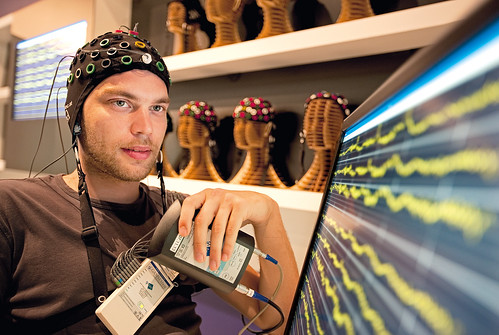You Must Recruit The Powerhouse Of Your Attendees’ Brains For Real Engagement
Have you ever had a slap-your-forehead-duh-moment?
Without realizing it, you have literally tapped, one of the most important regions of your brain: the prefrontal cortex (PFC). It’s the area directly behind your forehead.
The PFC is a powerhouse region of your brain. It controls whether your attendees are engaged at your event. You need to know how to kick-start the PFC if you want your attendees to pay attention and be involved. And how to avoid shutting down your attendees’ PFC.
The Powerhouse Portion
According to author Erika Garms, the PFC is a fascinating section of our brain. It regulates
- Active behavior
- Attention
- Emotions
- Monitoring others
- Monitoring for errors
- Thoughts
It is the newer part of our brain as supposed to the amygdala, the prehistoric lizard-brain that controls our emotions. The PFC is only present in mammals and varies in size by different species.
The PFC is what allows us to analyze our social relationships, be creative, generate ideas, make judgments, solve problems and engage in other high level critical thinking skills.
According to author David Rock, the PFC handles five main functions:
- Understanding
- Deciding
- Recalling
- Memorizing
- Inhibiting
Working together, these five functions comprise our thought—those not generated from external sources or from the senses.
The PFC’s Natural Limits
While the PFC is a powerhouse, it has many natural biological limitations.
It tires very quickly after being used for a complicated task or undivided attention. It must recharge in order to function again.
The PFC requires focus to use effectively. Without focus and the ability to filter distraction, it becomes overwhelmed and shuts down.
It needs glucose to function optimally. The PFC is only about 5% of the brain’s mass but requires 25% of the brain’s energy and fuel says Garms.
Why Most Conferences Overtax The PFC
Think of the last conference you attended. How long did you sit during each day?
Although you probably sat for the majority of the day, your PFC became heavily taxed. You probably didn’t take frequent outside fresh-air breaks, or eat high-protein and glucose snacks periodically.
I doubt that your presenters chunked their content into small segments, with the most important material at the first part of their presentation.
This is one reason why conference experiences are so draining on our bodies. Even though you probably sat the majority of the time, your PFC was overtaxed.
One Way To Stabilize The PFC During Conferences
One way to soothe the PFC and bring it back into focus is through foods. Foods can cause changes in the brain chemistry says Garms.
Create breaks using foods that will boost attendees’ moods, energy and productivity. Foods full of antioxidants and flavornoids improve memory, learning and other cognitive functions such as decision making, reasoning and math skills.
Garms suggests offering the following for snacks
- Blueberries
- Almonds
- Sunflower seeds
- Carrot sticks
- Celery sticks
- Red Delicious or Northern Spy Apples
- Dark Chocolate
What are some other ways outside of specific foods during breaks that you can help attendees maintain mental sharpness during your next conference? If a neuroscientist who specialized in engaging the PFC walked by your conference right now, what would they see and what would they want to change?



Thank you for writing about my two favorite things – the brain and the brain on meetings and food! Please could everyone make meeting breaks healthier, allow time between sessions to recharge and allow participants to reflect and contextualize information. Thank you Jeff.
Tahira, thank you for writing about two of my favourite things: the brain and breaks. More breaks. More movement at conferences. More time to digest what your brain is chewing on… And I guess food is up there with my favourite things too. Energy charged snacks to energize the brain rather than heavy food to put it to sleep seems like a good way to organize meetings, events and conferences. Thanks Jeff for the conversation!
‘@Tahira & @Roger
We need more brain-friendly conference advocates like both of you! Thanks for reading and responding.